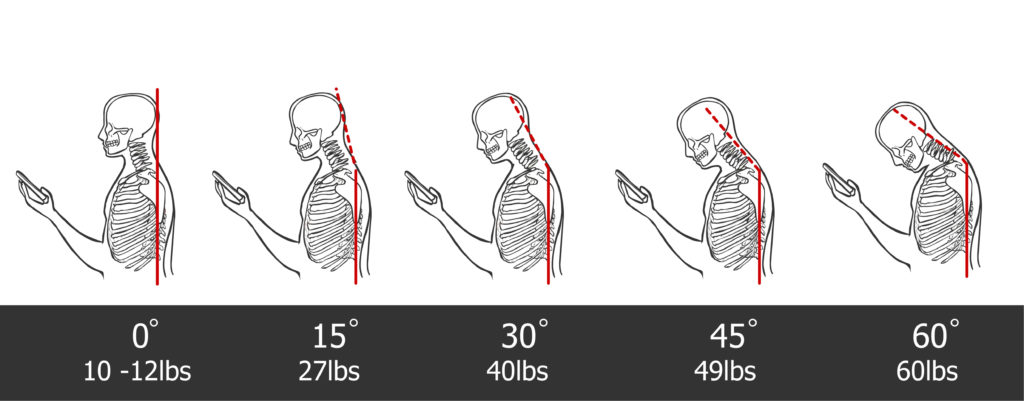Head and Neck
Anatomy
The skull is what makes up the face and head. It is supported by the first cervical segment.
The spine typically consists of 33 vertebral segments grouped into five regions: cervical, thoracic, lumbar, sacral, and coccygeal. Certain individuals can be born with additional or fused segments affecting movement in its own way.
Cervical Spine
The cervical spine makes up the neck and has seven segments – C1-C7. It consists of the upper and lower cervical segments. Its normal position has an inward curvature called lordosis. Although the upper and lower cervical segments contribute more to specific movements, all segments work together to contribute to your overall neck motion.
Upper Cervical Segments
- C1 is the first segment called the atlas. It gets its name because the base of the skull sits on C1. It’s unique in that it does not have a spinous process.
- C2 is the second segment called the axis. Acting as a post for the first segment, this segment’s role is responsible for much of the rotation we get in our neck.
The majority of neck rotation comes from these first two segments, making up the joint called the atlantoaxial (AA) joint. The remaining five segments will contribute to neck rotation, but they’re responsible for other neck movements as well.
Mid and Lower Cervical Segments
- C3-C7 segments portray more of the traditional vertebral presentation. These segments contribute to bending your neck forwards/backwards and side-to-side.

Interbody Joints
Intervertebral discs exist between almost every segment (with the exception between C1-C2) to provide cushion for shock absorption. Intervertebral discs consist of a central nucleus pulposus (made up of water and proteins). This is surrounded by the annulus fibrosus, which has multiple layers of connective tissue to secure the nucleus pulposus. These structures work together creating other (facet) joints and spaces for structures like nerve roots and the spinal cord.
Muscles
Muscles that support the neck – and spine in general – can vary in size, length, shape, direction, and orientation to help stabilize the spine. Such differences demonstrate the variety of motions in the neck ranging from large movements like nodding yes/no to small, subtle movements like bobbing your head when listening to music. This is why you can experience neck pain and/or tension (cervicogenic) headaches depending on which muscles are affected.
Common Causes Of Neck Pain and Headaches
Motor vehicle accidents, falls, and sport-related impact are the most common causes of traumatic neck injuries. Non-traumatic injuries are typically caused by faulty movement patterns and poor posture such as while sitting in front of a computer, texting on your phone, or sleeping position. Traumatic and non-traumatic injuries can cause various types of neck pain and headaches involving muscles, joints, nerves, and bones.
Other causes of neck pain and headaches include:
- Whiplash
- Wry neck
- Poor posture
- Repetitive movements/activities
- Ligament sprains or tears
- Muscle strains or tears
- Fractures
- And more
Common symptoms include:
- Pain (aching, sharp, dull)
- Clicking/popping
- Swelling or stiffness
- Numbness, tingling, or weakness ranging from shoulder to fingertips
- Difficulty sleeping
- Difficulty looking over your shoulder when driving
How Physical Therapy Helps You
Neck pain and headaches can really limit your ability to work, sleep, and enjoy your hobbies. Your symptoms can be local, referred pain from a muscle, or radiating from the neck. A physical therapist can evaluate you to determine the cause of your symptoms to help manage pain, improve mobility, and restore strength.
Following the initial evaluation, your physical therapist will determine and discuss the cause of your pain or issues. Together, you and your physical therapist will set goals specific to your needs and create a plan of care. Your plan of care will help you accomplish your goals and get you back to the activities you enjoy doing!
Living with pain does not have to be your new norm. Contact us to get a free phone consult and schedule an initial appointment if you’re suffering from neck pain and/or headaches.

480.269.1668